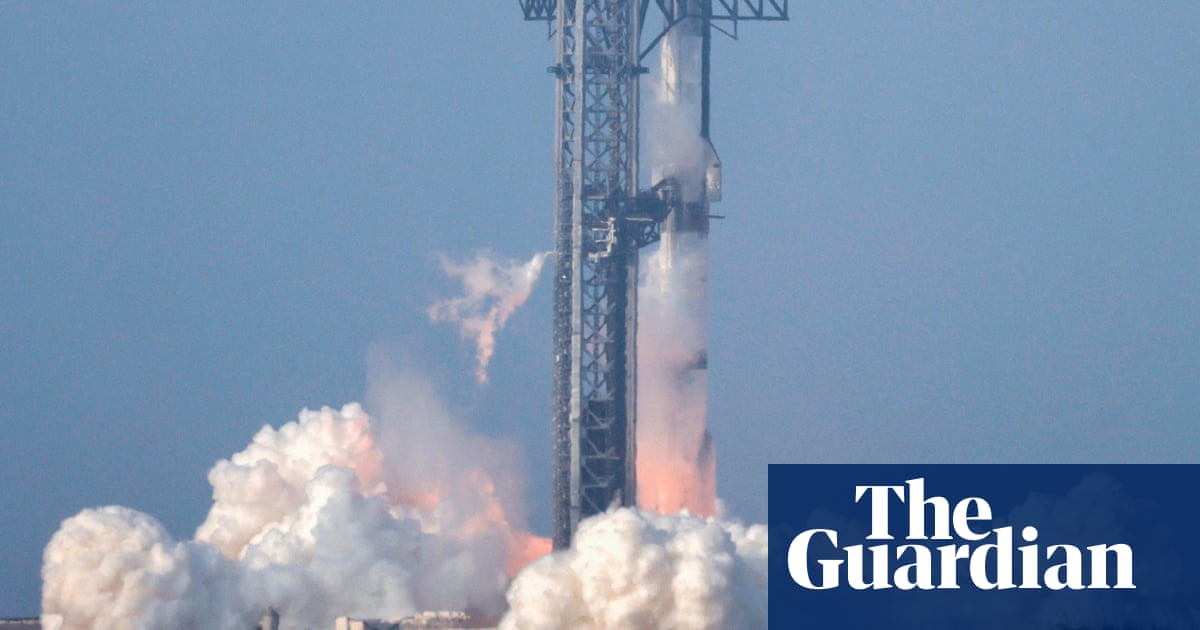- cross-posted to:
- usa@lemmy.ml
- usa@midwest.social
- cross-posted to:
- usa@lemmy.ml
- usa@midwest.social
SpaceX mission control lost contact with the rocket after it leaked fuel and spun out of control, despite already flying halfway around the world
SpaceX mission control lost contact with its latest Starship rocket on Tuesday, as it leaked fuel, spun out of control, and made an uncontrolled re-entry after flying halfway around the world, likely disintegrating over the Indian Ocean, officials said.
“Just to confirm, we did lose contact with the ship officially a couple of minutes ago. So that brings an end to the ninth flight test,” said SpaceX’s Dan Huot during a live feed.
Starship, the futuristic rocket on which Elon Musk’s ambitions for multiplanetary travel are riding, roared into space from Texas on its ninth uncrewed test launch and flew further than the last two attempts that ended in explosive failure.



It was rescinded because there was no reason to believe at point of rescission that it was possible to meet the benchmarks. To simplify if you intend to drive 1000 miles in 5 days and on day 3 you are 200 miles in there is no reason to believe you can meet the deadline.
In your analogy, they were on day 0.
They had not been awarded any money, money that was meant to help accelerate the deployment. The 3 year deadline only starts AFTER they would have received the money to do it. The service doesn’t work without satellites launched, and the money was to launch said satellites.
No one else had this limitation put on them.
The government is legally allowed to make that judgement. Satellite internet is a tremendously dumb way to provide rural internet.
And yet the big telco’s have gotten billions of dollars to do it over the years, don’t do it or come nowhere near the requirements, and ask for even more money, meanwhile SpaceX has done it, and it’s profitable.
This is an argument for giving them less money not spacex more. A huge swarm of LEO comsats that must be constantly replaced is a poor idea compared to fiber + 5G towers for most environments. The latter is much much cheaper.
If we could run fiber to every home or close enough that an area can be covered by 5G towers, of course that would be ideal, but it’s not profitable and hasn’t happened.
The big telcos don’t want to do it, and barely/don’t do it when given money to offset the costs. Giving them even less money isn’t going to speed it up.
In a perfect world, the infrastructure would be nationalized, and it could be built at a loss as a service, but that’s not the world we live in.
You say it’s a poor idea, but it’s the idea that is actually working today, and is profitable today.
It might not be an ideal solution, but I wouldn’t call it a poor idea.
Edit: and if the telecos ever get their act together and build the infrastructure, then starlink wouldn’t be needed, would become unprofitable, and could wind down.
If running fiber to everyone for 5g towers is unprofitable, the much more expensive satellite arrays that would be necessary for the same level of coverage don’t sound like a better option.
Those satellites cover the entire orbit. They can offer service to multiple countries for consumers and then provide commercial services for airplanes and marine craft. It makes up for the cost, and I imagine the commercial side is actually a big part of how they’ve become profitable.
Spending millions to build fiber/5g infrastructure to support a hundred or so people just isn’t as appealing, which is why no one wants to do it.
They’re not profitable yet, though. They’re already raising prices beyond what you would need to expand 5g and they’ll need to do much more to keep sending up new satellites as they die off.
Something no one seems to be acknowledging is the upkeep for a 5g setup would be significantly less than putting up new satellite constellations every few years.